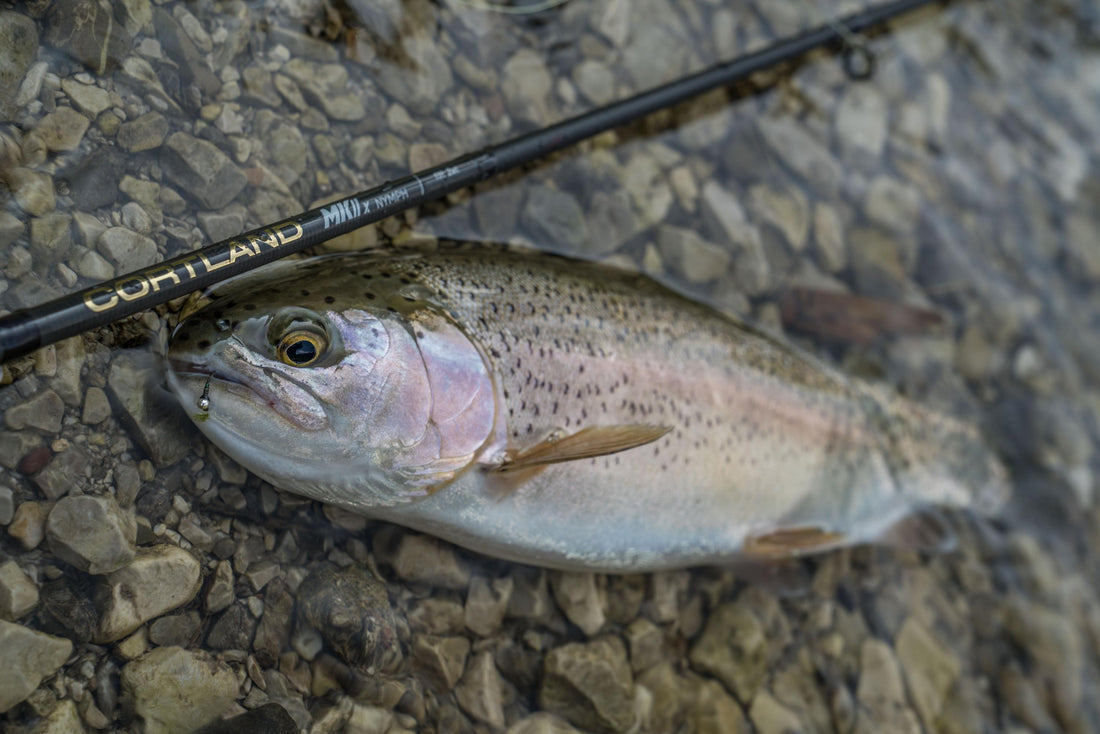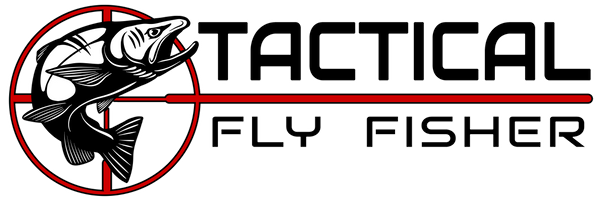
World Fly Fishing Championships Italy 2018 Session 2
Share
World Championship Italy Session 2 Middle Sarca River
The Middle Sarca venue was probably the best all-around venue in the championship. The productivity of the water was better than the upper venue near Pinzolo, which showed in the higher density of fish, insects, and weed growth we saw there. While there were still some difficult beats, the higher numbers of wild trout helped spread the opportunity between beats well and anglers who fished well were able to put 20 - 30 fish on the board in a session.
I drew beat 12 which was just below a bridge. It started with some high gradient pocket water. The pockets transitioned into a medium depth and speed run which then spread into a weedy flat above an artificial weir. Below the weir the river widened into a series of shallow pockets before the next beat. Looking at the water I felt there was a variety of water that held fish and was confident I could pull out a good session. However, the angler before me in the morning only caught two fish so my enthusiasm was tempered a little bit until the session got going and I was able to get into a groove.

Cody Burgdorff during practice on the Sarca River just above the Middle Sarca venue near Tione.
During my setup time, I noticed a fish rising somewhat regularly on the front face of a rock on the far side of the flat above the weir. I marked its position in case it stopped rising before the session started (which it did). My plan was to start the session by fishing a single dry fly down and across working gradually over to the fish to give other trout a chance to eat along the way. Then I planned to drop to the bottom of the beat into the shallow pocket water and methodically fish my way to the top of the beat. If the pockets were good, I planned to return with whatever time I had left.
Looking at the beat, I think most anglers would have focused on the deeper water of the run and heavier pocket water at the top. However, during practice we found there were lots of brown trout tucked under boulders in skinny side channels. As a result, I decided to make a bit of a gamble and focus on this water early when the water temperatures were prime for pocket water and bugs were more active.
Just before the session started, I sat waiting by the weir and noticed several rises in the near side eddy below. They looked like smaller fish but I decided to give them a try to avoid spooking them before standing just upstream to target the fish I had seen rising on the far side. On my first cast, the closest fish rose and took my #14 parachute quill bodied mayfly. Sadly, it was 19.5 cm and wasn’t long enough to score. A few casts later and the other fish in the area took my dry. It was even smaller.

Just below the weir. I caught two fish under 20 cm on and one measurable fish on the far side with a single dry. I also landed a few on nymphs when I came back through after fishing the pocket water below.

The lower end of the run just above the weir. The fish I got on dries where on the far left side of the photo in the smooth water above the rocks.
I powdered my dry fly and waded upstream to regroup and try for the fish I had seen rising on the far side. I took a position casting quartering downstream to show it the fly first and avoid my line and leader dragging the fly into the currents tailing and spilling over the weir. Midway across the river a nice brown/marble hybrid rose from a deeper channel and took my dry. It was a bit of a challenge keeping it out of the weeds and above the weir on 7x but I was able to slide it into the net to get on the scoreboard. I returned to the same spot afterward. I hadn’t seen my intended target fish rise since the start of the session but I still remembered which rock it sat in front of. It took a few casts to get the placement and drift right but the fish rose and took my dry fly. Two fish were on the board five minutes in and I was feeling good.
I dropped to the bottom of the beat and began zigzagging my way through the pocket water with a shallow dry dropper (just longer than the 50 cm minimum between hanging flies) on a Modular Euro-nymphing leader. I had a dark brown caddis, similar to my Front-End Loader, which my teammate Cody Burgdorff had tied for me that had been successful for him during practice. On the dropper I switched frequently between a thread Frenchie and peacock and orange krystal flash perdigon. Both were size 18 or 16 and varied between bead sizes depending on the pocket I fished but I mostly needed a 2.3 mm slotted tungsten bead.
Fish came every 2nd or 3rd pocket as I worked my way back and forth. Some of the best-looking pockets gave up no fish while some of the skinniest and most unassuming pockets produced fish. In addition to brown trout and brown/marble hybrids, I caught a couple of small beautiful wild rainbows as well. I talked to some locals afterward who said the Sarca is one of the few rivers in Italy with naturally reproducing rainbows. The Chiese River we fished during practice is another.

The pocket water at the bottom of my beat which ended just above the island in the upper right hand side of the photo.
Typical of rivers I’ve fished where they co-occur, the rainbows inhabited the faster pockets closer to the center of the river while the brown trout dominated the edges and slower pockets, not that any of the pockets in this part of the beat were particularly swift.
I was able to catch several fish on the dry fly but the bulk ate my nymph. On one drift, my dry fly sank but I wanted to keep it going to the end of the pocket so I kept a close eye on the orange post within the wing as it drifting. A rainbow took it swiftly just below the surface at the tail end of the pocket. Watching it disappear and seeing the flank of the rainbow simultaneously is one of my favorite memories from the session.
As I approached the far bank, I needed a fly that would sink slower and have the power to pull fish from cover. The squirmy fit the bill and I caught several larger fish under the grass and trees on the far bank in inches of slow water. Sadly, I missed several as well and my rig came back with squirmy tails which had been bitten off.
The pocket water was good all the way to the weir and I caught one more fish on the single dry rig in an eddy on the river left side below the bridge. By the time I moved above the weir I had about 12 or 13 fish on the board. I hoped the water with a different character above would still produce.
Above the weir the water had several channels running between the weeds. It was flat and fairly slow and leant itself to continued use of the dry dropper rig to suspend the nymph for longer drifts. I worked up the bank of the river left side from the flat near to the top of the run. This water was similar in depth and speed so I didn’t have to change my rig constantly while moving between water of different depth and speed. Quite a few browns were a long the weedy edge and they ate the same nymphs I used below the weir. The only challenge was that I had to drop to the bottom of the flat to cross at the weir in order to avoid spooking fish while bringing fish to my controller.

The run in the upper half of my beat. The end of my beat was below the line of large boulders in the pocket water below the bridge.
Once I had covered most of the water near to me, I dropped back down to the bottom of the flat. I re-rigged to lengthen my tippet below the dry and began another pass covering water closer to the middle of the river. About mid-way through the run the water became too deep and swift to be appropriate for the dry dropper rig. I switched to my nymph rod and started probing the run and caught several more fish including my two largest fish of the session at around 40 cm. However, I caught less fish here than expected so I wondered if the angler in the morning had focused here.
I expected the heavy water at the top of the beat to be really good based on where fish were holding earlier in the session. However, I had a bit of a dry spell and couldn’t find any fish in the heavier pockets near the center flow. I landed a couple fish on the edges and had a streak of three out of four that came unbuttoned shortly after hooking them. I don’t know why really. I didn’t feel I was late on the hook sets and I couldn’t identify any other potential issues. It was one of those unfortunate sequences that sometimes happens in tournaments despite years of repetition working on the small things to avoid it. Thankfully it was a temporary slump.
I only had about five minutes left by the time I reached the top of the beat so I circled back around to the upper part of the run. This water hadn’t been rested for long but I hoped a fly change would get another fish or two to eat. I landed one more with about 30 seconds left to end the session with 25. I was a bit frustrated that I had missed or dropped five or six more. This was especially sore because I finished 3rd behind David Arcay of Spain who landed one more fish at 26. Igor Hrbik of Slovakia finished 1st on the beat above me with 32 fish and I wouldn’t have been able to overtake him unless I’d found an approach that was more effective.
Overall though I feel I fished well during the session. During other sessions in the tournament my beat produced two fish in the first and third sessions, and eight fish in the last two sessions. The average finish on the beat was 19th place.
After my second session finish, I jumped from 89th to 43rd place overall. The team had a bit better session and we moved up to 8th place but still out of the medal positions where we hoped to be. Thankfully, we were headed in the right direction with three more sessions to go.
